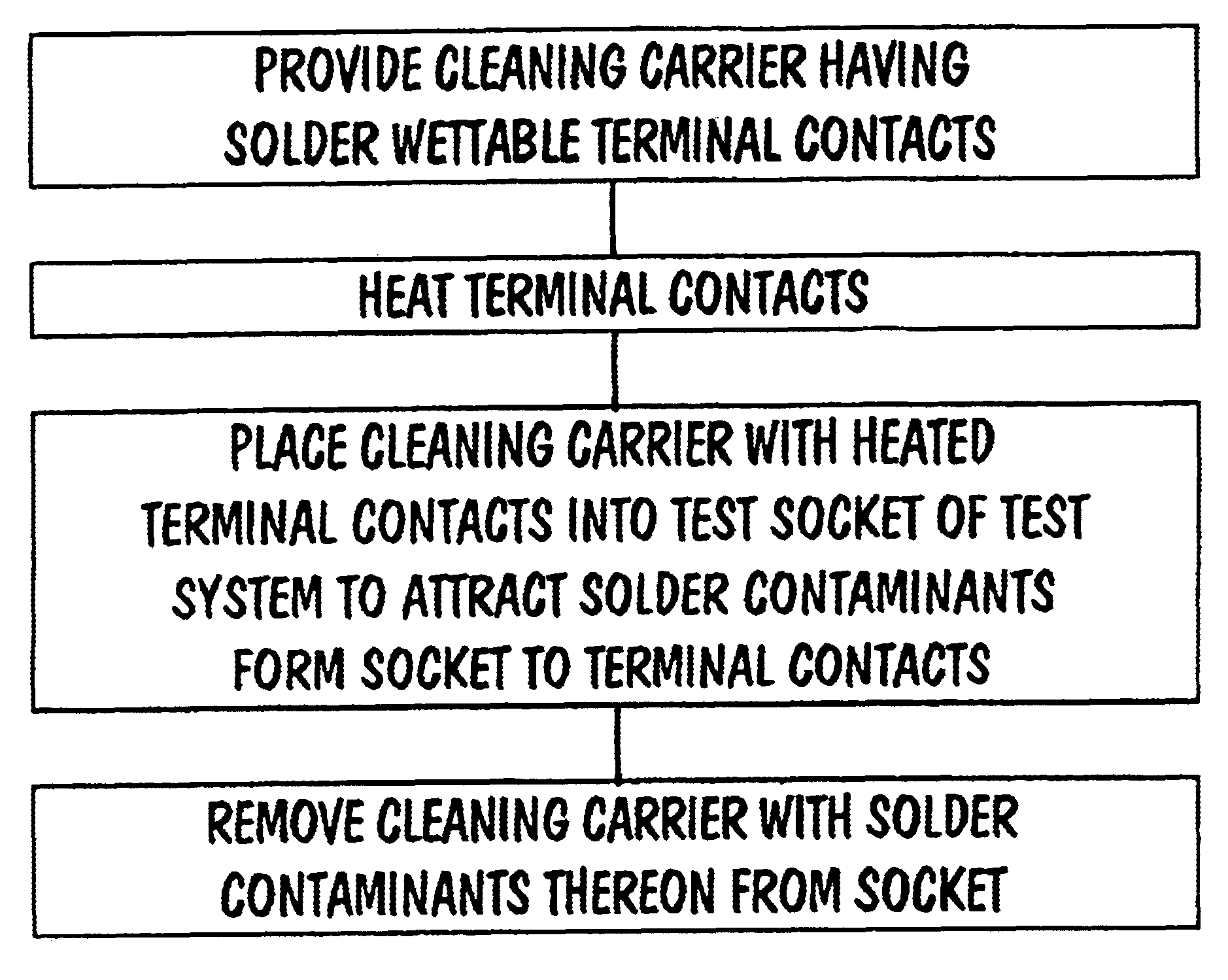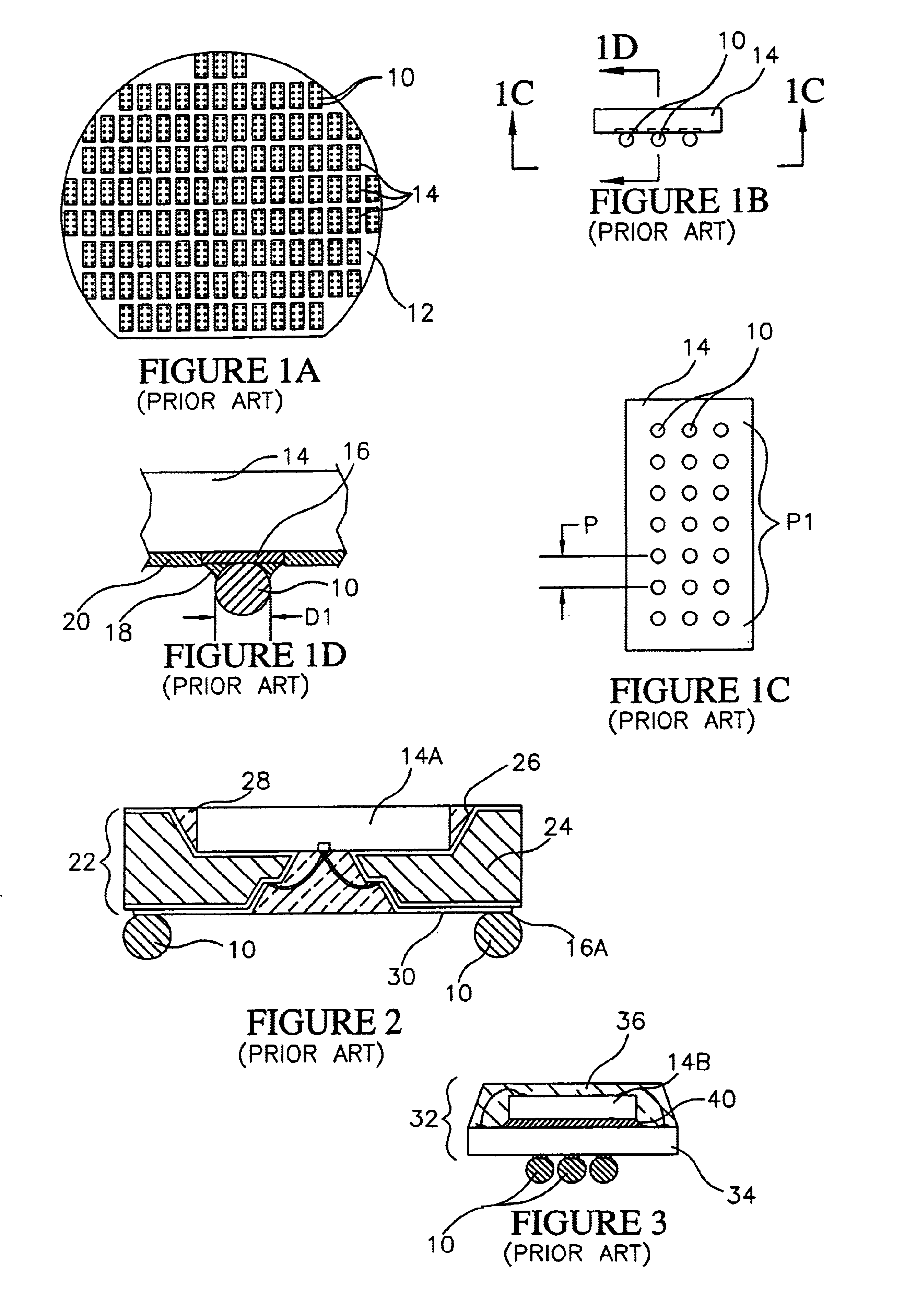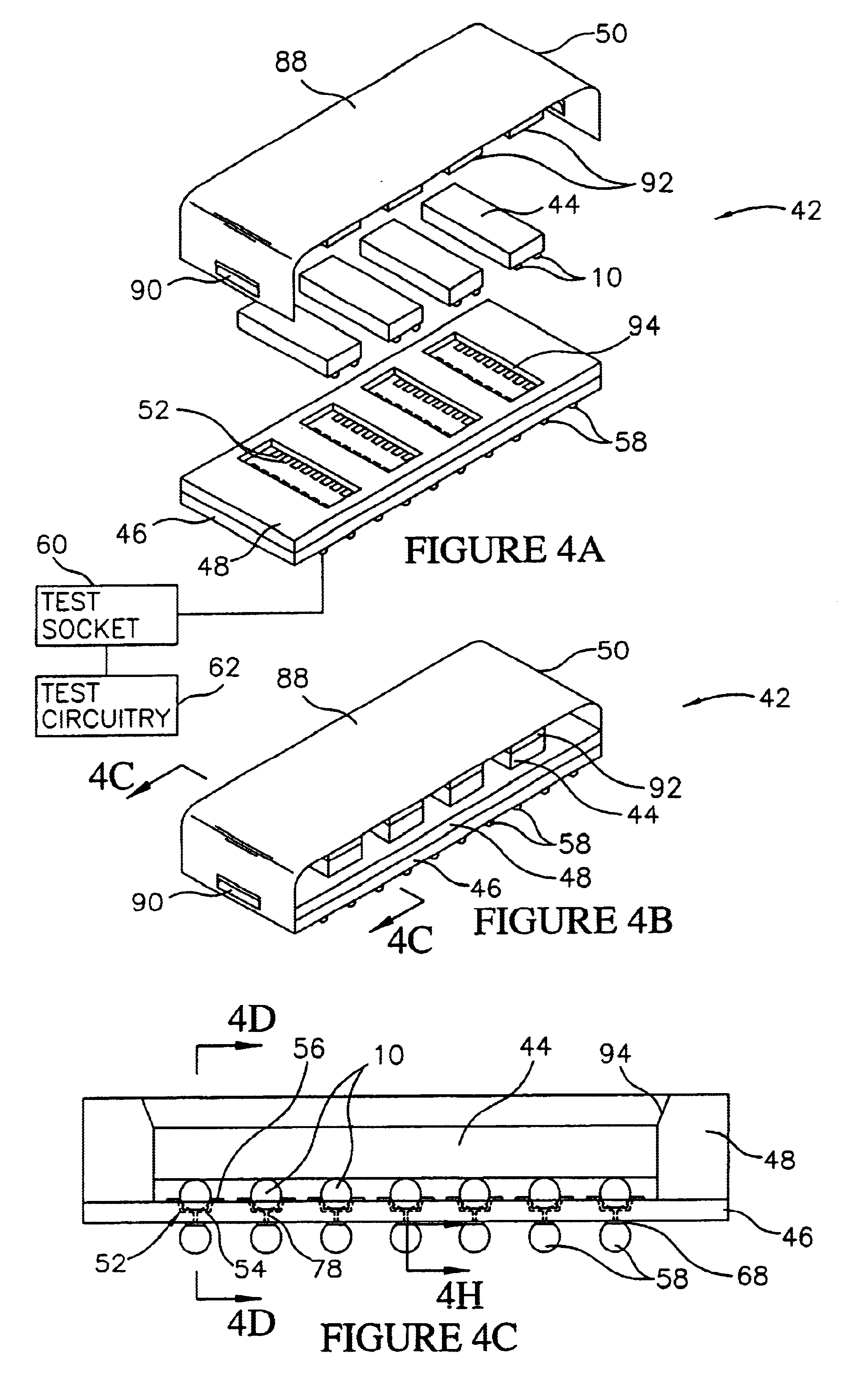Carrier for cleaning sockets for semiconductor components having contact balls
a technology of contact balls and sockets, which is applied in the direction of cleaning using liquids, instruments, lighting and heating apparatus, etc., can solve the problems of difficult to make low-resistance electrical connections with deformed contact balls, the material of the socket is relatively soft, and the ball deforms easily, etc., to achieve low resistance, resist wear, deformation, and oxide buildup
- Summary
- Abstract
- Description
- Claims
- Application Information
AI Technical Summary
Benefits of technology
Problems solved by technology
Method used
Image
Examples
Embodiment Construction
[0045]Referring to FIGS. 1A-1D, 2, and 3, various prior art semiconductor components having contact balls 10 are illustrated.
[0046]In FIG. 1A, a semiconductor wafer 12 comprises a plurality of semiconductor dice 14. FIG. 1B illustrates a die 14 that has been separated from the wafer 12. Each die 14 includes a plurality of contact balls 10. As will be further explained, test carriers can be constructed in accordance with the invention for testing either the wafer 12, or the die 14.
[0047]As shown in FIG. 1C, the contact balls 10 are formed on the die 14 in a pattern P1. In the illustrative embodiment, the pattern P1 is a dense grid array, such as a ball grid array (BGA). By way of example, a representative diameter D1 for the contact balls 10 can be about 0.005-in (0.127 mm) to 0.050-in (1.270 mm) or greater. A representative pitch P (center to center spacing) of the contact balls 10 can be from about 0.008-in (0.228 mm) to about 0.060-in (1.524 mm) or greater.
[0048]The die 14 also in...
PUM
 Login to View More
Login to View More Abstract
Description
Claims
Application Information
 Login to View More
Login to View More - R&D
- Intellectual Property
- Life Sciences
- Materials
- Tech Scout
- Unparalleled Data Quality
- Higher Quality Content
- 60% Fewer Hallucinations
Browse by: Latest US Patents, China's latest patents, Technical Efficacy Thesaurus, Application Domain, Technology Topic, Popular Technical Reports.
© 2025 PatSnap. All rights reserved.Legal|Privacy policy|Modern Slavery Act Transparency Statement|Sitemap|About US| Contact US: help@patsnap.com



